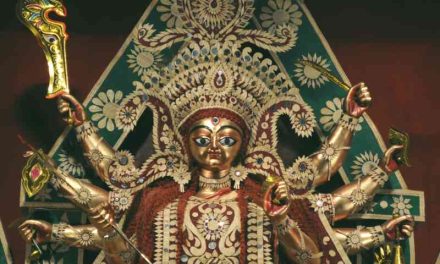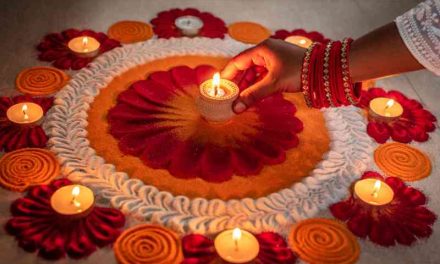Hinduism is a rich and diverse tradition that encompasses various schools of thought, practices, and scriptures. One of the most important sources of Hindu cosmology, or the understanding of the origin and structure of the universe, is the Brahmanda Purana.
The Brahmanda Purana is one of the eighteen major Puranas, or ancient texts that narrate the history and mythology of Hinduism. The word Brahmanda means “cosmic egg”, and the Purana describes how the universe emerged from a primordial egg that contained the essence of Brahma, the creator god.
The Brahmanda Purana is also known as the Vayaviya Purana, because it is attributed to Vayu, the god of wind, who narrated it to a group of sages in a forest called Naimisha. The Purana consists of four sections: Prakriya-pada, Anushanga-pada, Upodghata-pada, and Upasamhara-pada.
Prakriya-pada
The first section of the Brahmanda Purana deals with the creation of the universe and its various elements. It begins with a dialogue between Brahma and his son Narada, who asks him about the origin of everything. Brahma then reveals how he emerged from the cosmic egg and created various beings and worlds.
The Prakriya-pada also describes the evolution of the five elements (earth, water, fire, air, and space), the formation of time (kalpa), and the division of time into cycles (manvantara) and ages (yuga). It also gives an account of the creation of gods, demons, sages, humans, animals, plants, and other creatures.
Anushanga-pada
The second section of the Brahmanda Purana deals with various topics related to cosmology, geography, genealogy, ethics, yoga, and rituals. It contains detailed descriptions of the seven continents (dvipa) and their sub-continents (varsha), as well as the seven netherworlds (patala) and their inhabitants.
The Anushanga-pada also gives a list of the progeny of Brahma and his sons, such as Rudra, Daksha, Marichi, Bhrigu, Atri, Angiras, Pulastya, Pulaha, Kratu, Vasishtha, Prachetasas, Kashyapa, and others. It also narrates the stories of various kings, sages, gods, and goddesses who played important roles in Hindu history and mythology.
The Anushanga-pada also contains chapters on ethics and duties (dharma), yoga and meditation (yoga), geography and pilgrimage (tirtha), festivals and ceremonies (vrata), good government and administration (rajadharma), diplomacy and trade (niti), and other topics.
Upodghata-pada
The third section of the Brahmanda Purana deals with the glory and worship of Shiva, one of the supreme deities in Hinduism. It contains several hymns and stories that praise Shiva’s attributes and deeds. It also describes how Shiva acquired various names and forms, such as Nilakantha (the blue-throated one), Linga (the phallic symbol), Nataraja (the lord of dance), Ardhanarishvara (the half-male half-female form), Bhairava (the fierce form), Dakshinamurti (the teacher facing south), Rudra (the destroyer), Maheshvara (the great lord), Shankara (the auspicious one), etc.
The Upodghata-pada also contains chapters on the origin and significance of various sacred places associated with Shiva, such as Kashi (Varanasi), Kedarnath, Kailash, Amarnath, Rameshwaram, Somnath, Ujjain, etc. It also explains how to perform various rituals and ceremonies to please Shiva and attain his blessings.
Upasamhara-pada
The fourth and final section of the Brahmanda Purana deals with the end of the universe and its re-creation. It describes how at the end of each kalpa, Brahma goes into sleep, and all his creations are dissolved into their primal elements. It also describes how Shiva performs his cosmic dance and destroys everything with his fire and drum. It then narrates how Vishnu, another supreme deity in Hinduism, preserves the essence of life in his navel and recreates the universe with the help of Brahma and Shiva.
The Upasamhara-pada also contains chapters on the Adhyatma Ramayana, a spiritual interpretation of the epic Ramayana, which depicts the life and deeds of Rama, an incarnation of Vishnu. It also contains the Lalita Sahasranama, a hymn that extols a thousand names of Lalita, the supreme goddess, and consort of Shiva.
The Brahmanda Purana is a fascinating and comprehensive text that reveals the Hindu worldview and cosmology. It is a valuable source of knowledge and wisdom for anyone interested in Hinduism and its culture. It is also a testament to the creativity and diversity of the Hindu tradition, which encompasses various perspectives and approaches to the ultimate reality.
Works Cited:
(1) Brahmanda Purana – Wikipedia. https://en.wikipedia.org/wiki/Brahmanda_Purana
(2) The Brahmanda Purana – Wisdom Library. https://www.wisdomlib.org/hinduism/book/the-brahmanda-purana
(3) Brahmanda Purana – Vyasa Mahabharata. https://www.vyasaonline.com/brahmanda-purana/
(4) Brahmanda Purana | HinduPad. https://hindupad.com/brahmanda-purana/





